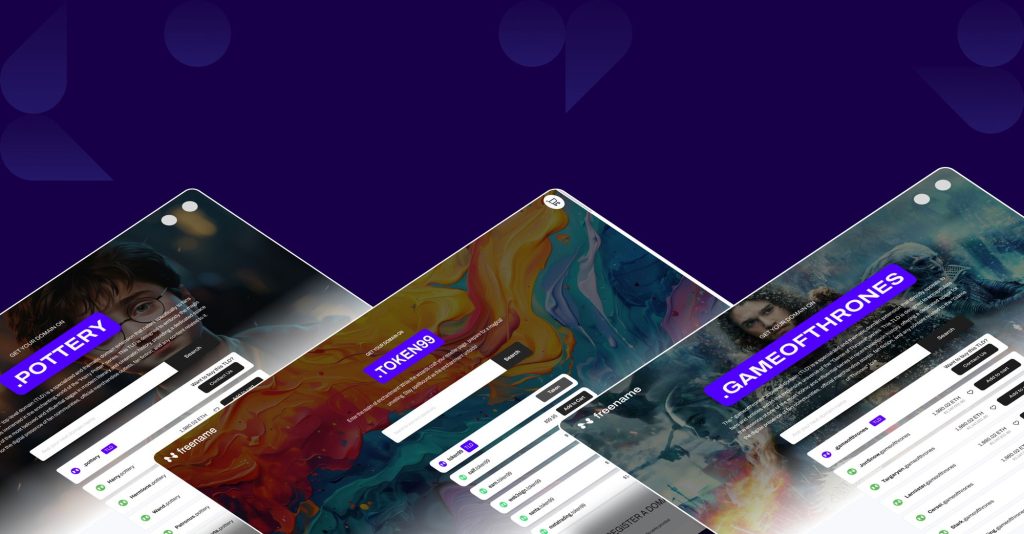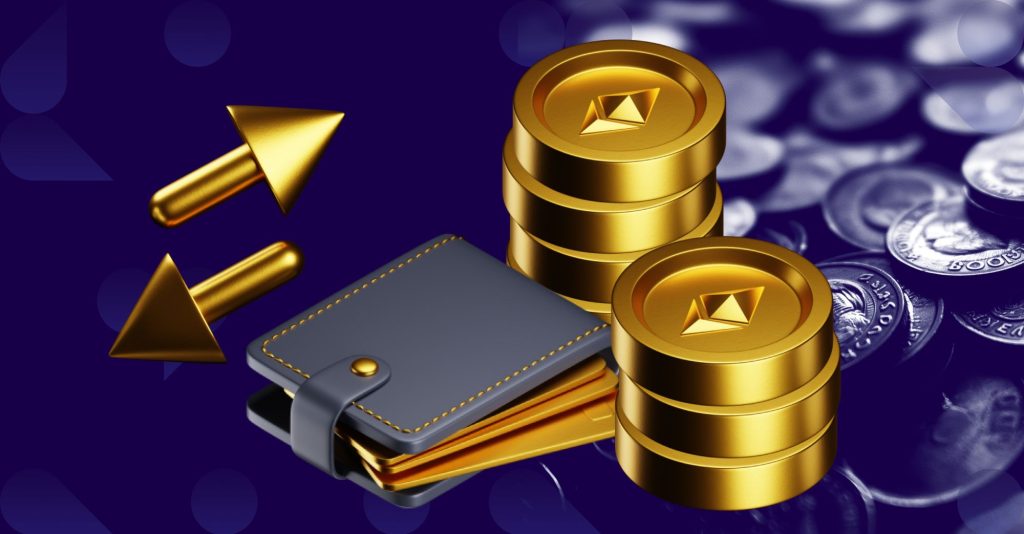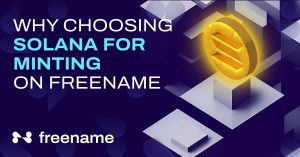Introduction
Web3 Domains: A New Frontier in Digital Marketing
Web3 domains represent a significant evolution in the digital landscape. They offer decentralized control and lifetime ownership without expiration or annual renewal fees, making them an attractive choice for many businesses and individuals. As the digital market continues to evolve, promoting these domains has become crucial for maximizing sales and generating passive income. Effective promotion strategies can significantly enhance visibility and profitability, especially when leveraging models like Freename’s royalty system.
The Importance of Promotion in Web3 Domain Sales
Promotion plays a pivotal role in the success of Web3 domains. Web3 domains offer unique features, making them highly attractive in the current digital era. Effective promotion strategies, including the use of reseller pages and social media marketing, are essential for reaching potential buyers and maximizing sales.
Overview of Web3 Domains’ Advantages for Promotion
Advantages of Web3 Domains in Innovative Marketing Strategies
Web3 domains provide numerous advantages for innovative marketing strategies. Their decentralized nature and lifetime ownership without renewal fees make them a preferred choice for many businesses and individuals. Utilizing reseller pages and social media platforms can amplify their reach and impact, leading to increased visibility and sales. These domains can be creatively marketed to highlight their unique features, attracting a broader audience.
Technological Innovations and Practical Applications
Web3 domains are at the forefront of technological innovations in the digital space. They enable new forms of digital identity and asset management, which can be leveraged for various marketing strategies. From creating unique digital experiences to offering secure transactions, Web3 domains open up new avenues for marketers to explore and implement effective promotional campaigns.
- Examples of Web3 TLDs that have achieved unprecedented record sales include .USA +9250 domains, .Japan +850 domains, .France +750 domains, .India +600 domains, .China +550 domains.
- These statistics highlight the growing popularity and adoption of Web3 domains globally, indicating a strong market presence and potential for further growth.

The Reseller Page as a Promotional Tool
What is a Reseller Page?
A reseller page is a dedicated platform that allows individuals and businesses to promote and sell Web3 domains. It functions as a showcase for available domains, providing detailed information and facilitating the purchasing process. In the context of Web3 domains, reseller pages play a crucial role in enhancing visibility and driving sales.
The New Reseller Page
Freename has introduced a New Reseller Page, revolutionized by community feedback to enhance the visibility and sales from TLDs. This updated page is designed to meet the needs of resellers and buyers alike, providing an optimized platform for showcasing and selling Web3 domains.
Here are the key features and benefits of the New Reseller Page:
- Passive Royalties:
- Earn 50% of the registration value any external sale, generating continuous passive income.
- Web3 Orientation:
- Take advantage of the strategic moment to enter the Web3 domain market, a rapidly expanding and highly technological sector.
- Advanced Customization:
- Choose from 15 different AI-generated backgrounds or upload your own custom background to make your Reseller Page unique.
- Innovative Domain Display:
- Domains are displayed through lists or cards, with the future perspective of including relevant images automatically generated by AI.
- AI-Generated Content:
- All texts, titles, and descriptions are created through artificial intelligence, optimized for SEO, to enhance the visibility and attractiveness of your domains.
- Ease of Purchase:
- Users can easily add domains to their cart and search for specific domains associated with the TLD, improving the shopping experience and sales conversion.
- Comprehensive FAQ Section:
- Provides immediate answers to the most common questions, enhancing transparency and trust for end-users.
Example of Reseller Pages

Why Activate the Freename Reseller Page?
Activating the Freename Reseller Page offers several strategic advantages:
- Increased Visibility:
- The new page design, powered by community feedback, ensures that your TLDs receive maximum visibility in a highly competitive market.
- Continuous Passive Income:
- You can earn passive income from royalties each time a domain under your TLD is registered from an external sale.
- Leverage Web3 Growth:
- With the rise of Web3, it’s a strategic moment to enter this burgeoning market. Owning a Freename TLD allows you to capitalize on the growing interest in Web3 technologies, making it a smart business decision.
How to Use Freename’s Reseller Page?
Using the Freename Reseller Page is straightforward and user-friendly:
- Log in to your Freename account.
- Navigate to your account Portfolio and manage your TLD section.
- Open the Reseller Page section.
- Active the Reseller Page and customize it according to your branding needs.
Reseller Pages now feature easy search options and quick add-to-cart features that allow people to purchase with just a few clicks. They are also optimized for SEO to enhance visibility and include innovative domain display options.
You can easily share the link to your Reseller Page on your social media handles, blogs, and business website to redirect your buyers to the Reseller Page for a hassle-free domain shopping experience.
Promoting Your Reseller Page
One of the most effective ways to increase the visibility and sales of your reseller page is through word-of-mouth marketing and social media sharing. Encourage satisfied customers to share their positive experiences and promote their purchases on social networks. Word-of-mouth can significantly boost your domain sales, as it builds trust and credibility among potential buyers. Here are some tips to leverage this strategy:
- Encourage Sharing: Ask your customers to share their reseller page experiences on their social media profiles. Provide incentives such as discounts or special offers.
- Use Hashtags: Create unique and catchy hashtags related to your reseller page and encourage users to include them in their posts.
- Engage with Your Audience: Respond to comments and messages on social media to build a strong relationship with your audience.
- Run Social Media Campaigns: Organize contests and giveaways to encourage social media users to visit and share your reseller page.
These strategies highlight the power of the New Reseller Page in maximizing visibility and sales, offering an excellent user experience, and leveraging the latest technologies in artificial intelligence. By utilizing these tools, resellers can effectively promote their Web3 domains and achieve significant growth in sales and passive income.
The Impact of Promotion on Web3 Domain Sales
Techniques of Promotion and Their Effectiveness
Different promotional techniques have varying impacts on the sales of Web3 domains. Word-of-mouth marketing, influencer partnerships, and strategic advertising can significantly influence buying decisions. Analyzing these techniques helps in understanding their effectiveness and optimizing future campaigns.
Statistical Analysis of Sales Performance
Statistical data provides insights into the impact of promotional strategies on sales performance. By examining sales trends and performance metrics, we can identify the most effective promotional techniques and make informed decisions for future campaigns.
- According to data by Gitnux, word-of-mouth impacts 13% of consumer sales, and word-of-mouth marketing generates twice the amount of sales compared to paid advertising.
- Based on the newest report from SmartInsight, the average time spent on social media globally is 2 hours and 23 minutes per day, with 62.3% of the world’s population using social media. This highlights the importance of leveraging social media for domain promotion.
Web3 Royalties: A Model for Passive Income
Understanding Freename’s Royalty Model
Freename offers a unique royalty model that allows TLD owners to earn passive income. By activating the royalty option, owners can earn 50% of the sale value every time a domain under their TLD is sold. This model provides a continuous income stream and is a lucrative option for many resellers.
Economic Benefits and Challenges
The royalty model offers significant economic benefits, including a steady income stream and high earning potential. However, it also comes with challenges, such as market competition and the need for effective promotion. Analyzing these factors helps in understanding the overall viability of the royalty model.
- Freename’s royalty system allows TLD owners to earn 50% of the registration value. For example, if a domain under the TLD ‘.Metaverse’ is sold in cash for $3000, the TLD owner earns $1500 USDT.
- The cost of activating royalties is a one-time fee ($50) with no annual costs, making it an attractive option for generating long-term passive income.

Conclusion
Future Prospects and Recommendations
Our research highlights the importance of effective promotion for maximizing sales and passive income from Web3 domains.
The use of reseller pages, combined with strategic promotional techniques, can significantly enhance visibility and profitability. Freename’s royalty model offers a lucrative option for resellers, providing a steady income stream.
The Web3 domain market is poised for significant growth, offering numerous opportunities for marketers and resellers. By leveraging innovative promotional strategies and models like Freename’s royalty system, individuals and businesses can maximize their earnings and stay ahead in this evolving digital landscape.







